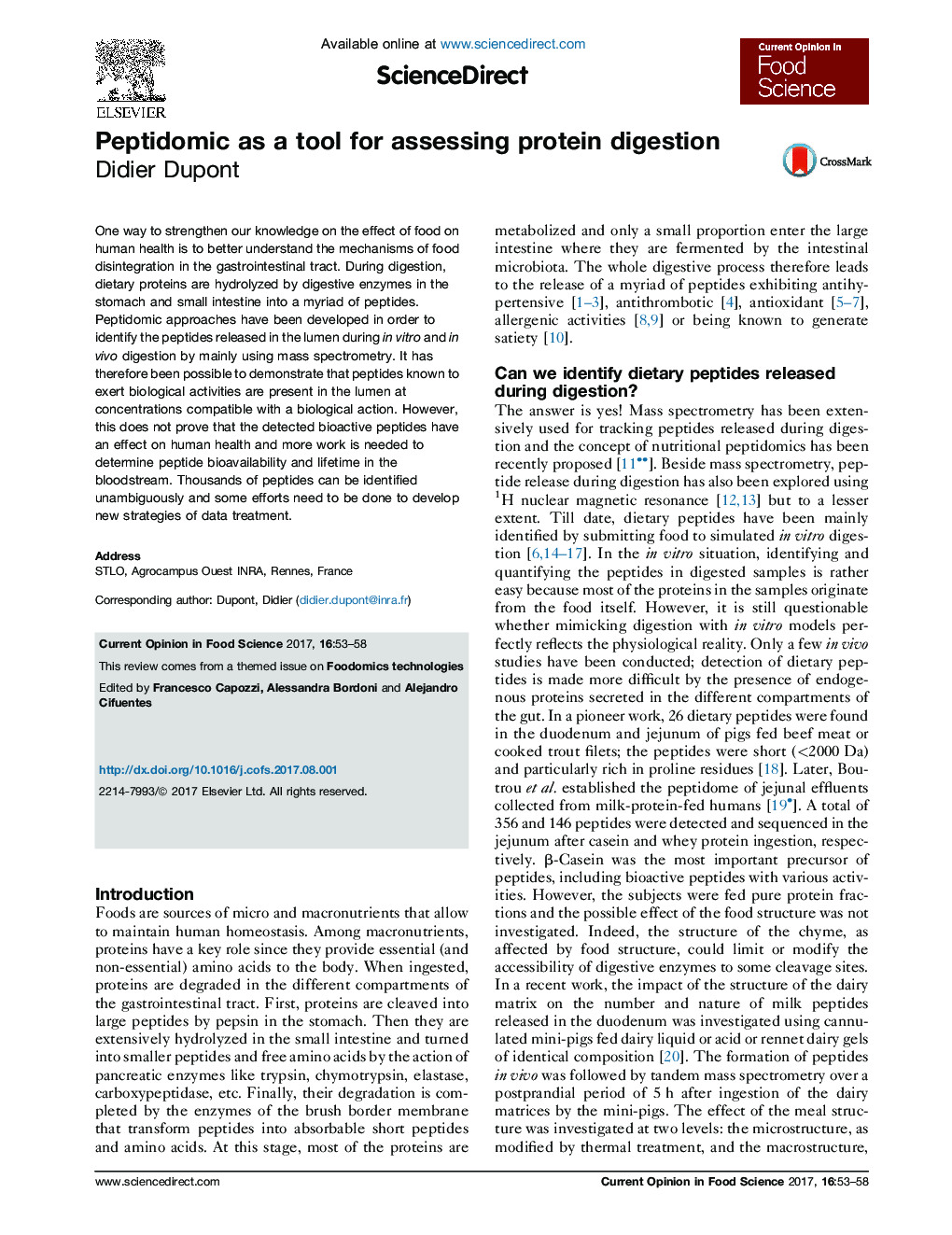| Article ID | Journal | Published Year | Pages | File Type |
|---|---|---|---|---|
| 5520871 | Current Opinion in Food Science | 2017 | 6 Pages |
â¢Mass spectrometry allows to identify the peptides released during protein digestion.â¢Numerous dietary bioactive peptides have been identified in the gut.â¢More work is needed to determine peptide bioavailability and lifetime in the blood.â¢Development of new statistical tools are necessary to analyze the datasets.
One way to strengthen our knowledge on the effect of food on human health is to better understand the mechanisms of food disintegration in the gastrointestinal tract. During digestion, dietary proteins are hydrolyzed by digestive enzymes in the stomach and small intestine into a myriad of peptides. Peptidomic approaches have been developed in order to identify the peptides released in the lumen during in vitro and in vivo digestion by mainly using mass spectrometry. It has therefore been possible to demonstrate that peptides known to exert biological activities are present in the lumen at concentrations compatible with a biological action. However, this does not prove that the detected bioactive peptides have an effect on human health and more work is needed to determine peptide bioavailability and lifetime in the bloodstream. Thousands of peptides can be identified unambiguously and some efforts need to be done to develop new strategies of data treatment.
